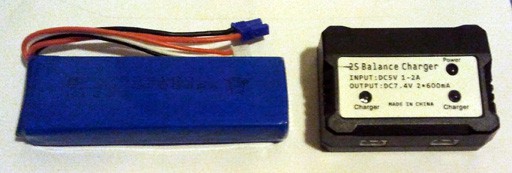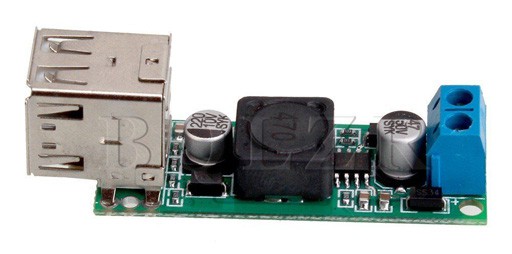So far we have to accomodate the following components:
- Arduino Pro Mini @ 5V
- WS2812B LED strips. @ 5V
- ADXL355 or MPU6050 @ 5V
- Hall Effect sensor @ 5V
The bulk of the power consumption will be taken up by the WS2812B addressable 5V LED strips. The power used by the Arduino and sensors is negligible in comparison.
Here are my initial workings for the LEDs:
- total LEDs = 40
- power/mA per LED = 60
- total power/mA = 2400 (full white) ( 75% duty cycle/mA = 1800 )
- total power per colour/mA = 800 ( 75% duty cycle/mA = 600 )
As well as the power of a battery we also need to consider the weight.
I decided to go with a Lipo battery with a high discharge rate. These batteries can be small(ish), thin, and i don't need to worry about any heat build-up due to airflow under the board. You do have to be carefull with charging though. In looking for a battery the main issue i then had to consider was, what voltage? Within the voltage range i will be working it basically came down to a 3.6V or a 7.4V Lipo battery. As i really needed everything at 5V (so i didn't have to spend any money on more parts) i decided to go for 7.4V and convert it down to 5V. I also made the decision to totally over-power it. (It really *ing annoys me when batteries run out on devices. In this modern day and age of mobile devices it is amazing how many of them are not really, erm, portable.)
With all that in mind i found on ebay a 7.4V Lipo battery for a quad-copter (2700mAh and a 10C discharge rate - that's high.. like take the power surge from a 100 LEDs suddenly turned on full high.. about 2.9A at max discharge).
 With 40 LEDs this will give us about 2 hours use if all the LEDs are turned on at full-brightness. As the LEDs won't be on all the time, this lengthens the usage, add in some other tricks like duty-cycle reduction in the programming and we should end up with a 4-5 hours continuous maximum usage scenario. But, given the likelihood of NOT skating around with all lights constantly flashing at full brightness in convoluted patterns that give bystanders epilipsy, i am optimistic in hoping for at least 10 hours use between charges.
With 40 LEDs this will give us about 2 hours use if all the LEDs are turned on at full-brightness. As the LEDs won't be on all the time, this lengthens the usage, add in some other tricks like duty-cycle reduction in the programming and we should end up with a 4-5 hours continuous maximum usage scenario. But, given the likelihood of NOT skating around with all lights constantly flashing at full brightness in convoluted patterns that give bystanders epilipsy, i am optimistic in hoping for at least 10 hours use between charges.
Now we have to convert from 7.4V to 5V. I am going for a pre-built solution for this as my skills are not quite up to building a stable power convertor, small enough to fit under a longboard, and be of good enough quality that it won't do things like backfire and blow up the Lipo battery (oh, i've heard stories, but i'm no Tony Stark). So, on ebay (again) i found a small 'DC 6~35V to 5V 3A Double USB Converter Voltage Step Down Regulator Module'. I can feed the Lipo in one end and get regulated 5V power out the the other. I will probably removed the USB sockets from the board and attach the power lines directly.

 matt thurstan
matt thurstan
Discussions
Become a Hackaday.io Member
Create an account to leave a comment. Already have an account? Log In.